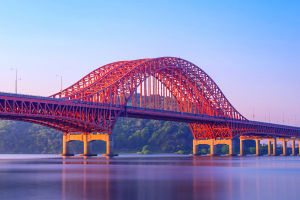The world's largest rivers can be measured in a variety of ways - by length, discharge, or drainage basin size. In terms of watershed area, the top four rivers are the Amazon, Congo, Nile, and Mississippi-Missouri, each with unique features and ecological importance.
1. Amazon River
With a watershed area of approximately 7 million square kilometers, the Amazon is the world's largest river by far. The river runs through South America, originating in the Andes Mountains of Peru and flowing eastward across Brazil until it empties into the Atlantic Ocean. The Amazon's massive watershed covers 40% of South America, including parts of Brazil, Peru, Colombia, Venezuela, Ecuador, Bolivia, and Guyana.
The Amazon is known for its incredible biodiversity, hosting an estimated 10% of the world's known species. It is also a vital source of water for millions of people living in the region. Unfortunately, the Amazon is facing numerous threats, including deforestation, illegal mining, and climate change.
2. Congo River
The Congo River, also known as the Zaire River, is the second-largest river in the world by watershed area, covering around 4 million square kilometers. It flows through the Democratic Republic of the Congo, Angola, Zambia, Cameroon, and the Central African Republic before emptying into the Atlantic Ocean.
The Congo is the world's deepest river, with depths reaching over 220 meters in some places. It is also home to the world's second-largest rainforest, after the Amazon. The Congo River Basin is a vital source of food, water, and transportation for millions of people living in the region. However, the river faces numerous threats, including deforestation, mining, and conflict.
3. Nile River
The Nile River is the world's longest river, stretching over 6,600 kilometers from its source in Burundi to its delta in Egypt. Its watershed area covers approximately 3.3 million square kilometers, spanning 11 countries in eastern Africa.
The Nile has played a crucial role in the development of human civilization, providing water for agriculture and transportation for thousands of years. Today, the river continues to be a vital source of water for millions of people living in the region. However, the Nile is facing numerous threats, including pollution, climate change, and political conflicts over water resources.
4. Mississippi-Missouri River
The Mississippi-Missouri River system is the largest river system in North America, with a watershed area of approximately 3.2 million square kilometers. The Mississippi River originates in Minnesota and flows southward to the Gulf of Mexico, while the Missouri River originates in Montana and flows eastward to join the Mississippi in Missouri.
The Mississippi-Missouri River system is a vital source of water for agriculture, transportation, and industry in the United States. The river system is also home to a diverse range of wildlife, including fish, birds, and mammals. However, the river system is facing numerous threats, including pollution, habitat loss, and climate change.
The world's largest rivers play a crucial role in supporting human civilization and maintaining ecological balance. However, these rivers are facing numerous threats, including pollution, deforestation, and climate change. It is essential that we take action to protect these vital waterways and ensure that they continue to support human societies and ecosystems for generations to come.


